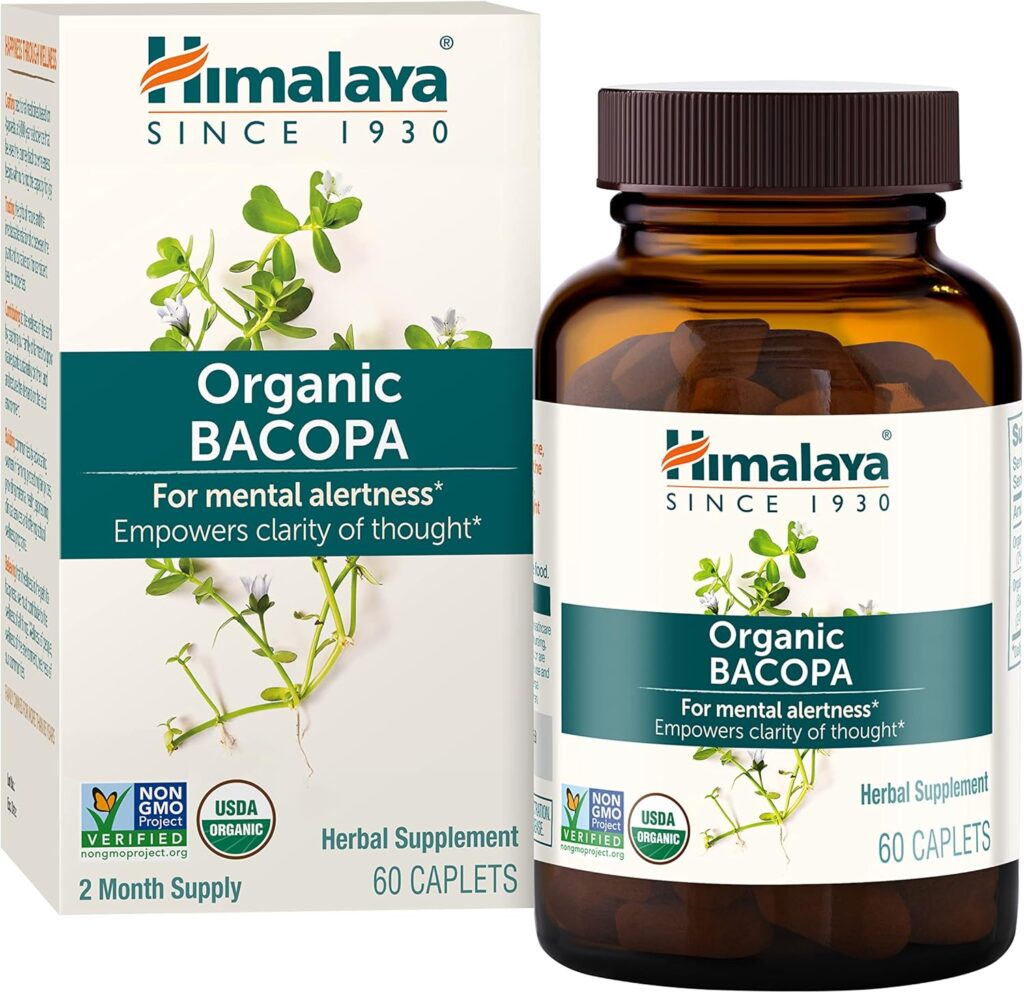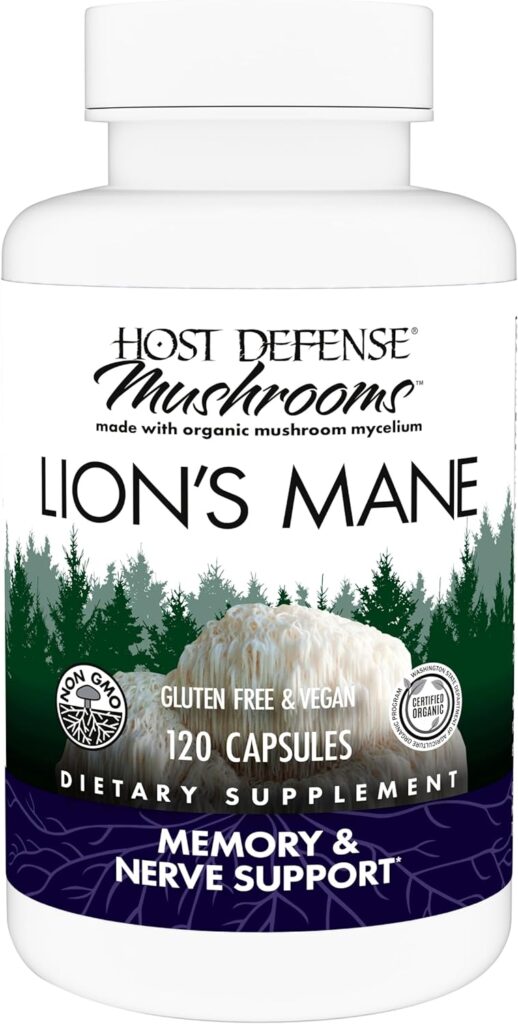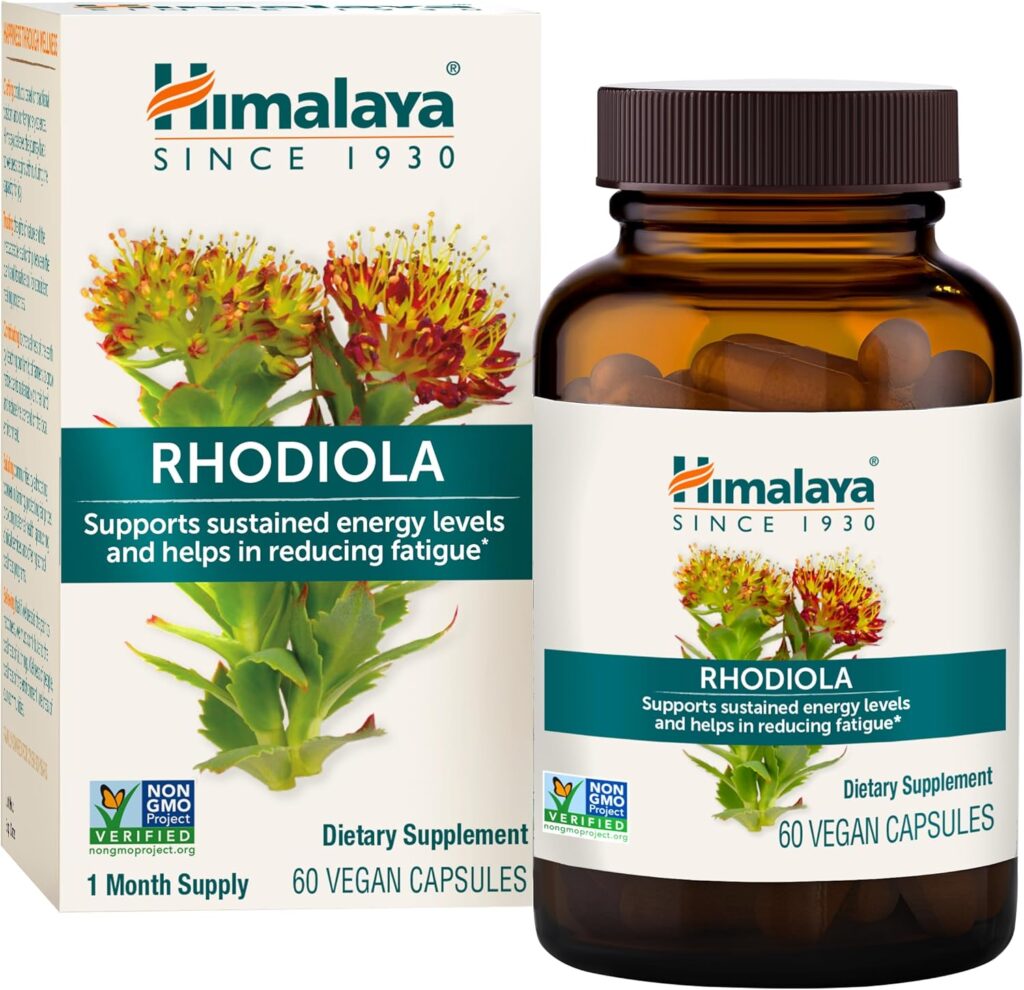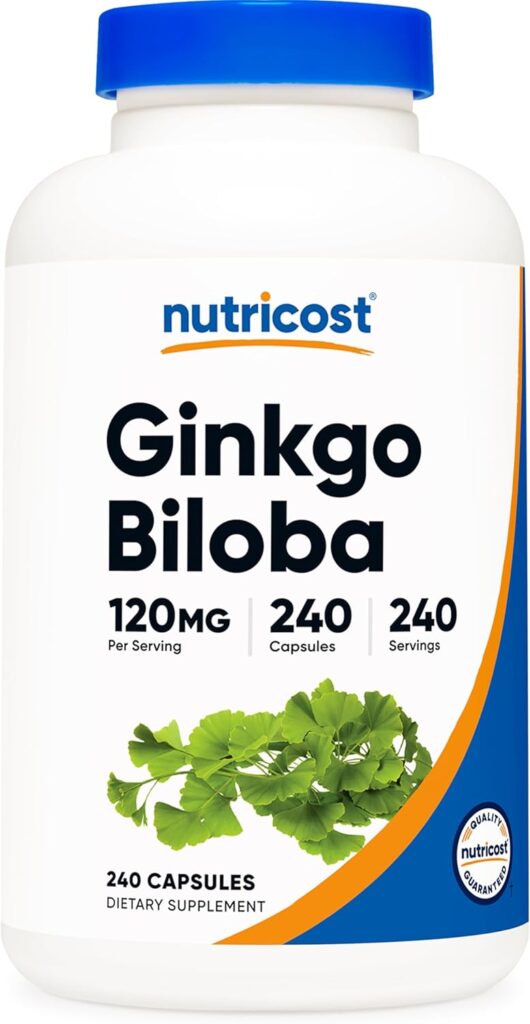Understanding Nootropic Stacks
A nootropic stack combines supplements, herbs, and compounds that work together to boost various aspects of cognitive function. These carefully crafted blends aim to enhance memory, focus, mental clarity, and even mood.
When choosing a quality nootropic stack, several crucial factors come into play.
Ingredient Synergy: The Key to Effectiveness
The synergy between components forms the backbone of an effective nootropic stack. It’s not about randomly mixing “brain-boosting” ingredients.
Instead, it involves creating a carefully crafted combination that works harmoniously to enhance cognitive function.
For example, combining a racetam like Piracetam with a choline source such as Alpha-GPC can significantly improve the efficacy of both compounds. Racetams increase the demand for acetylcholine in the brain, while choline sources provide the raw materials needed to meet this demand.
This synergistic effect can lead to improved memory and learning capabilities.
Another powerful synergistic combination is L-Theanine and caffeine. L-Theanine, an amino acid found in green tea, helps smooth out caffeine’s jittery effects while enhancing it’s focus-boosting properties.
This combination often results in a calm, focused state without the typical caffeine crash.
Evidence-Based Ingredients: Science-Backed Brain Boosters
When evaluating a nootropic stack, prioritize ingredients with solid scientific research supporting their cognitive benefits. While new compounds constantly emerge in the nootropics world, it’s wise to focus on those with a proven track record.
Some well-researched nootropic ingredients include:
Bacopa Monnieri
This herb, used in traditional Ayurvedic medicine for centuries, has shown promising results in improving memory and reducing anxiety in multiple studies. Research suggests that Bacopa may enhance cognitive function by promoting neuron communication and protecting the brain from oxidative stress.

Lion’s Mane Mushroom
Studies indicate that this fungus may support neuroplasticity and potentially aid in treating neurodegenerative diseases. Lion’s Mane contains compounds that stimulate the production of nerve growth factor (NGF), which is crucial for the growth and maintenance of neurons.

Rhodiola Rosea
This adaptogenic herb has been shown to reduce mental fatigue and improve performance on cognitive tasks, particularly in stressful situations. Rhodiola works by helping the body adapt to physical, chemical, and environmental stress, potentially improving mental performance under pressure.

Ginkgo Biloba
Known for it’s potential to improve blood flow to the brain, Ginkgo has shown positive effects on cognition, particularly in older adults and those with cognitive impairment. It may also have antioxidant properties that protect brain cells from damage.

Bioavailability: Ensuring Your Brain Gets What It Needs
A high-quality nootropic stack should consider the bioavailability of it’s ingredients. Bioavailability refers to the proportion of a substance that enters the bloodstream when introduced into the body and can have an active effect.
Some nootropic compounds have naturally low bioavailability, meaning that a large portion of what you consume may not actually reach your brain. Look for stacks that include ingredients with high bioavailability or that incorporate compounds to enhance absorption.
For instance, piperine, a compound found in black pepper, has been shown to increase the bioavailability of various nutrients and supplements. Some quality nootropic stacks include piperine or similar compounds to boost the effectiveness of other ingredients.
Safety Profile: Prioritizing Long-Term Brain Health
While cognitive enhancement can be appealing, it’s crucial not to sacrifice safety for short-term gains. A quality nootropic stack should prioritize ingredients with well-established safety profiles and minimal side effects.
Be cautious of stacks that include untested or potentially dangerous compounds. Stick to ingredients that have been thoroughly studied for both efficacy and safety.
It’s also important to consider potential interactions with any medications you may be taking.
Neuroprotection: Shielding Your Brain from Harm
A comprehensive nootropic stack should include compounds that offer neuroprotective benefits. These ingredients help protect your brain cells from oxidative stress, inflammation, and other forms of damage that can occur over time.
Look for antioxidants and anti-inflammatory compounds in your stack. Some examples include:
Curcumin
The active compound in turmeric is known for it’s potent anti-inflammatory and antioxidant properties. Curcumin has been shown to cross the blood-brain barrier and may help protect against various neurodegenerative conditions.
Resveratrol
Found in red wine and berries, this compound has shown neuroprotective effects in various studies. Resveratrol may help protect brain cells from damage and improve blood flow to the brain.
Vitamin E
This powerful antioxidant can help protect brain cells from oxidative damage. Vitamin E has been associated with a reduced risk of cognitive decline in some studies, particularly when combined with other antioxidants.
Balanced Approach: Addressing Multiple Aspects of Cognition
A quality nootropic stack should take a holistic approach to cognitive enhancement. Instead of focusing solely on one aspect, like memory or focus, look for stacks that address multiple facets of cognitive function.
This might include ingredients for:
Memory Enhancement
Compounds like Bacopa Monnieri and Phosphatidylserine have been shown to support various aspects of memory, including formation, retention, and recall.
Focus and Concentration
Ingredients such as L-Tyrosine and Caffeine can help improve attention and concentration, allowing for better task performance.
Mood Regulation
Some nootropics, like 5-HTP and L-Theanine, can help balance neurotransmitters associated with mood, potentially reducing anxiety and improving overall well-being.
Stress Reduction
Adaptogens like Ashwagandha and Rhodiola Rosea can help the body better cope with stress, which can indirectly improve cognitive function.
Mental Clarity and Processing Speed
Compounds like Alpha-GPC and Huperzine A can support acetylcholine production, which is crucial for mental clarity and quick thinking.
By addressing these various aspects, a well-rounded nootropic stack can provide comprehensive cognitive support.
Transparency and Quality Control: Know What You’re Getting
When choosing a nootropic stack, opt for products from companies that prioritize transparency and quality control. Look for brands that:
- Clearly list all ingredients and their dosages
- Provide information about ingredient sources
- Conduct third-party testing for purity and potency
- Adhere to Good Manufacturing Practices (GMP)
This level of transparency allows you to make informed decisions about what you’re putting into your body and ensures you’re getting a high-quality product.
Personalization: Tailoring Your Stack
Everyone’s brain chemistry is unique. What works wonders for one person may have little effect on another.
Look for stacks that offer some flexibility or customization options.
Some companies provide ‘base’ stacks that you can add to or modify based on your individual needs and responses.
Don’t be afraid to experiment (safely) with different combinations to find what works best for you. Keep a journal to track your experiences with different nootropics and how they affect your cognitive function.
Cycling and Long-Term Use: Sustaining the Benefits
Some nootropics may lose their effectiveness over time as your body builds tolerance. A quality stack should provide guidance on proper cycling protocols to maintain the benefits of the ingredients.
Cycling involves taking breaks from certain nootropics or alternating between different compounds to prevent tolerance buildup. This approach can help ensure the long-term effectiveness of your nootropic regimen.
When starting a new nootropic stack, begin with lower doses and gradually increase as needed. This allows you to assess your individual response and minimize the risk of side effects.
Exercises to Optimize Your Nootropic Experience
To get the most out of your nootropic stack, try these exercises:
Cognitive Baseline Assessment
Before starting a new stack, take online cognitive tests to establish your baseline performance in areas like memory, attention, and processing speed. This will help you objectively measure the effects of your nootropic regimen over time.
Mindfulness Meditation
Practice daily mindfulness to enhance the focus-boosting effects of your nootropics. Even just 10-15 minutes of meditation per day can significantly improve your ability to concentrate and reduce stress.
Sleep Optimization
Ensure you’re getting quality sleep to maximize the benefits of your nootropic stack. Good sleep hygiene, including consistent sleep schedules and a relaxing bedtime routine, can significantly enhance cognitive function.
Nootropic Journal
Keep a detailed log of your nootropic use, including dosages, timing, and perceived effects. This will help you identify patterns and optimize your stack over time.
Brain Training Games
Engage in brain training exercises to complement your nootropic regimen and potentially enhance it’s effects. Games that challenge memory, problem-solving, and spatial reasoning can be particularly useful.
By incorporating these practices, you can create a comprehensive approach to cognitive enhancement that goes beyond just taking supplements.
Understanding Dosages and Timing
Proper dosing and timing are crucial for maximizing the benefits of your nootropic stack while minimizing potential side effects. Here’s what you need to know:
Start Low and Go Slow
When introducing a new nootropic to your stack, always start with the lowest effective dose. Gradually increase the dosage over time if needed, paying close attention to how your body and mind respond.
Consider Half-Lives
The half-life of a nootropic compound decides how long it remains active in your system. Some nootropics, like caffeine, have relatively short half-lives and may need to be taken multiple times throughout the day for sustained effects.
Others, like Bacopa Monnieri, have longer half-lives and are typically taken once a day.
Time Your Intake
Some nootropics work best when taken at specific times of the day. For example:
- Stimulating nootropics like caffeine are often best taken in the morning or early afternoon to avoid interfering with sleep.
- Relaxing nootropics like L-Theanine or Ashwagandha may be more beneficial when taken in the evening.
- Memory-enhancing nootropics like Bacopa Monnieri are often recommended to be taken with a meal to improve absorption.
Be Consistent
Many nootropics require consistent use over time to reach their full potential. For example, the cognitive benefits of Bacopa Monnieri typically become noticeable after 4-6 weeks of regular use.
Potential Side Effects and Precautions
While quality nootropic stacks are generally safe for most people, it’s important to be aware of potential side effects and take necessary precautions:
Common Side Effects
Some users may experience mild side effects when starting a new nootropic regimen, such as:
- Headaches
- Digestive discomfort
- Changes in sleep patterns
- Increased anxiety or jitteriness (particularly with stimulant-based nootropics)
These effects often subside as your body adjusts to the new compounds. If they persist or worsen, consider reducing your dosage or discontinuing use.
Drug Interactions
Some nootropics can interact with prescription medications. For example:
- Ginkgo Biloba may interact with blood thinners
- St. John’s Wort can affect the metabolism of various medications
- MAO inhibitors can interact dangerously with certain amino acid-based nootropics
Always ask with a healthcare professional before starting a nootropic stack, especially if you’re taking any medications.
Pregnancy and Breastfeeding
Many nootropics have not been thoroughly studied in pregnant or breastfeeding women. It’s generally recommended to avoid nootropic supplements during these periods unless specifically advised by a healthcare provider.
Long-Term Effects
While many nootropics have been used safely for years, the long-term effects of some newer compounds are not yet fully understood. Stick to well-researched ingredients and consider cycling your nootropic use to minimize any potential risks.
The Role of Diet and Lifestyle
A quality nootropic stack can significantly enhance cognitive function, but it’s most effective when combined with a healthy diet and lifestyle. Consider the following:
Nutrient-Dense Diet
A diet rich in omega-3 fatty acids, antioxidants, and essential vitamins and minerals provides the building blocks for optimal brain function. Include plenty of:
- Fatty fish (salmon, mackerel, sardines)
- Leafy greens (spinach, kale, collards)
- Berries (blueberries, strawberries, blackberries)
- Nuts and seeds (walnuts, pumpkin seeds, flaxseeds)
- Whole grains
Regular Exercise
Physical activity increases blood flow to the brain, promotes the growth of new brain cells, and can enhance the effects of many nootropics. Aim for at least 150 minutes of moderate-intensity exercise per week.
Stress Management
Chronic stress can negate the benefits of even the best nootropic stack. Incorporate stress-reduction techniques like meditation, yoga, or deep breathing exercises into your daily routine.
Adequate Hydration
Proper hydration is crucial for optimal brain function. Even mild dehydration can impair cognitive performance.
Aim to drink at least 8 glasses of water per day, adjusting for activity level and climate.
Building Your Own Nootropic Stack
While pre-formulated nootropic stacks can be convenient, building your own stack allows for maximum customization. Here’s how to get started:
Identify Your Goals
Determine what specific cognitive functions you want to enhance. Are you looking to improve memory, focus, mood, or overall brain health?
Research Individual Nootropics
Learn about different nootropic compounds and their effects. Pay attention to scientific studies, user reports, and potential side effects.
Start with a Foundation
Begin with a basic stack of well-researched nootropics. A common starting point might include:
- A choline source (e.g., Alpha-GPC or Citicoline)
- A racetam (e.g., Piracetam or Aniracetam)
- An adaptogen (e.g., Rhodiola Rosea or Bacopa Monnieri)
Add Complementary Ingredients
Gradually introduce extra nootropics that complement your foundation and align with your specific goals.
Monitor and Adjust
Pay close attention to how each addition affects your cognition and overall well-being. Be prepared to adjust dosages or remove ingredients that don’t work well for you.
Consider Professional Guidance
If you’re unsure about building your own stack, consider consulting with a healthcare provider or a qualified nutritionist with experience in nootropics.
The Future of Nootropics
The field of nootropics is rapidly evolving, with new compounds and formulations constantly emerging. Here are some exciting developments to watch:
Personalized Nootropics
Advances in genetic testing and artificial intelligence may soon allow for highly personalized nootropic stacks tailored to an individual’s unique brain chemistry and cognitive needs.
Natural Nootropic Discovery
Researchers continue to explore the natural world for new compounds with cognitive-enhancing properties. Plants and fungi from traditional medicine systems are being studied for their nootropic potential.
Enhanced Delivery Systems
New technologies are being developed to improve the bioavailability and targeted delivery of nootropic compounds. This could lead to more effective and effective nootropic formulations.
Integration with Technology
The combination of nootropics with brain-computer interfaces and other emerging technologies could open up new possibilities for cognitive enhancement.
Long-Term Studies
As nootropics become more mainstream, we can expect to see more long-term studies on their effects, safety, and optimal usage patterns.
Frequently Asked Questions
What are nootropics?
Nootropics are substances that can enhance cognitive function, including memory, creativity, motivation, and overall brain health. They can be natural or synthetic compounds.
Are nootropics safe?
Many nootropics have a good safety profile when used as directed. However, like any supplement, they can have side effects and may interact with medications. It’s important to research thoroughly and ask with a healthcare professional.
How long does it take for nootropics to work?
The onset of effects varies depending on the specific nootropic. Some, like caffeine, work almost immediately, while others, like Bacopa Monnieri, may take several weeks of consistent use to show noticeable benefits.
Can nootropics improve memory?
Yes, certain nootropics have been shown to enhance various aspects of memory. For example, Bacopa Monnieri and Phosphatidylserine are known for their memory-boosting properties.
Do I need to cycle nootropics?
Cycling can be beneficial for some nootropics to prevent tolerance buildup. However, not all nootropics require cycling.
It depends on the specific compound and your individual response.
Can I take nootropics with my medication?
Some nootropics can interact with medications. Always ask with your healthcare provider before combining nootropics with any prescription drugs.
Are natural nootropics better than synthetic ones?
Natural doesn’t always mean better or safer. Both natural and synthetic nootropics can be effective and safe when used properly.
The choice depends on your specific needs and preferences.
How do I know if a nootropic is working for me?
Keep a journal to track your cognitive performance, mood, and any side effects. You may also want to use objective cognitive tests to measure improvements over time.
Can nootropics help with anxiety or depression?
Some nootropics, like L-Theanine and Ashwagandha, may help reduce anxiety. However, nootropics should not be used as a replacement for professional mental health treatment.
Are there any age restrictions for using nootropics?
Most nootropic research has been conducted on adults. The use of nootropics in children and adolescents is generally not recommended without medical supervision.
Key Takeaways
- Look for synergistic ingredient combinations in your nootropic stack.
- Prioritize evidence-based ingredients with proven cognitive benefits.
- Consider the bioavailability of the compounds in your stack.
- Choose stacks with strong safety profiles and neuroprotective properties.
- Opt for a balanced approach that addresses multiple aspects of cognition.
- Prioritize transparency and quality control in nootropic products.
- Personalize your stack to your individual needs and responses.
- Implement proper cycling protocols for sustained benefits.
- Combine your nootropic regimen with cognitive exercises for optimal results.
